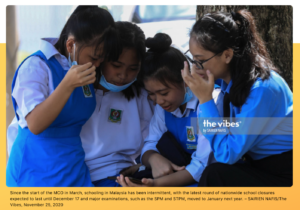Malaysia’s National COVID-19 Immunisation Plan: The Missing Details.

The Malaysian Government has recently published its National COVID-19 Immunisation Programme (NIP) outlining its strategy to achieve coverage by February of 2022. Though the document gives a good overview of the country’s vaccination plan from procurement to vaccination, it omits the minute execution details on several aspects along this value chain.
The missing details
- Trust building and outreach
A vaccine is only as successful as its population uptake. For this reason, it is imperative that the Malaysian government launches a public education campaign alongside vaccine rollout. With the rise of vaccine hesitancy in Malaysia, as seen by the 2013-2018 increase in national measles cases, special effort needs to be taken to engage with communities who may be more skeptical of the vaccine.
Recognizing this, The NIP and the Special Committee on Covid-19 Vaccine Supply Access Guarantee (JKJAV) has underscored a fatwa supporting the use of the vaccine. Additionally, the NIP noted the importance of advocacy and community engagement whilst also underscoring the role of local authorities in trust building efforts.
However, the plan does not lay out how this advocacy is going to be carried out, what means are going to be used, and how vaccine hesitant groups are going to be engaged. To ensure effective action against misinformation, new innovative approaches beyond traditional and social media need to be executed; for instance, monitoring false whatsapp messages and engaging local religious leaders to dispel misinformation through sermons. Efforts to inform the public on the importance of vaccinations is especially paramount given the current voluntary nature of immunisation registration.
- Ensuring equity in access
With approximately one fifth of the Malaysian population living in rural areas, equity in access is a key factor in realising Malaysia’s national immunisation targets. The vaccination deployment has to take into account the access barriers facing these communities, which can range from difficulties in online registration, access to information and logistical challenges. These equity considerations must also encompass economically disenfranchised B40 groups who may struggle to get off work, migrant communities who may fear legal repercussions and prisoners behind bars.
Along this vein, the NIP has outlined a couple of strategies to ensure access such as the use of mobile vaccination clinics and the availability of multiple registration streams. However, a map highlighting vaccination centre locations shows clear disparities in geographies. With obvious clustering, the majority of sites are concentrated in urban areas along the west coast of Peninsular Malaysia. Additionally, large swathes of East Malaysia are left without vaccination centres. Though these site locations may correlate with the population densities of these regions, the vaccination needs of small rural communities cannot be neglected.
Data is needed to better understand the variability in distances for communities to reach these sites. Based on this, strategies need to be adopted to ensure that no individual is more than 20km from a vaccination center. The government must also provide transportation and income support for poor communities without access to transportation and those forced to forego work to get immunised. Finally, a strategy has to be developed to ensure that incarcerated individuals, arguably a community at high risk of COVID-19 given their living conditions, are also vaccinated.
- Task-shifting and training
Creative human resource solutions have to be adopted to accelerate vaccine deployment. Current frontline health care staff are already stretched thin to meet the health needs of Covid-19 without the additional burden of providing vaccinations. The NIP has recognised this through their plan to increase the vaccinator workforce by enlisting retired healthcare workers, medical students, dentists, and nurse trainees and utilising public-private-NGO collaborations. Non-clinical volunteers will also be welcomed to aid in other tasks within vaccination centres.
Although the strategy is great in theory, the NIP has failed to outline how it is going to be put into action. Appropriate mechanisms are needed to train and supervise additional vaccinators and volunteers. Furthermore, eligibility requirements and legal protection need to be put in place to manage potential risks for individuals getting immunised. Finally, workforce placement has to be deliberately placed to minimise disparities across vaccination sites.
- Strengthening digital infrastructure
The NIP included a brief passage on the usage of an end-to-end platform encompassing Malaysia’s Pharmacy Information System (PhIS & CPS), Vaccine Management System, MySejahtera and a national immunisation dashboard to conduct real-time tracking.
However, the NIP did not mention how different sources of data are to be integrated. The plan indicated five channels for vaccination registration and appointment bookings; MySejahtera app, online, calling-in, via public and private healthcare centres and through in-person outreach in rural areas. Furthermore, Malaysia’s health information system is fractured with multiple players – public and private – holding different bits of patient data.
A robust health information system must be in place to centralise these different data sources to track vaccination progress, follow-up for second doses, and align vaccination strategies to meet vaccine supply and demand.
Furthermore, procedures to protect data security have to be erected to protect individual privacy. This is especially key with the use of volunteers to run vaccination centres and the sheer mass of data to be accumulated in this national campaign.
Conclusion
What the NIP gives is a general overview of the immunisation efforts in the months to come. What it does not give are the particulars in each step towards achieving this goal. More information on the actual particulars in realising this strategy has to be made available for public scrutiny – if such particulars are even available. These details could be the differentiating factors in determining Malaysia’s success or failure to achieve its 2022 immunisation targets because, as always, the devil is in the details.

